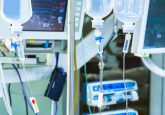New blood test could reduce abdominal aortic aneurysm fatalities

The research, published in the Journal of American Heart Association, describes a study carried out by scientists based at the University of Dundee (Scotland). It reports that an assay measuring plasma desmosine concentrations could be able to predict disease severity and clinical outcome in patients with abdominal aortic aneurysm (AAA).
Abdominal aortic aneurysm disease, described as the ‘silent killer’, is reported to affect 1% of men over the age of 65. At present, men over the age of 65 may be invited for ultrasound screening, if an AAA is detected they will be invited for follow up screenings. The major problem in the clinic is the unpredictability of the disease, aneurysms do not increase in size linearly with time and size does not correlate to rupture risk. Approximately 80% of AAA rupture leads to patient death.
The researchers believe that an assay detecting plasma levels of desmosine could more accurately predict the risk of AAA rupture. Desmosine is an amino acid derived from elastin, released into the blood stream from diseased aortas.
In the study, the team measured plasma desmosine and serum biomarker concentrations in 507 retroactive samples from patients with AAA and 162 healthy control subjects. It was demonstrated that plasma desmosine concentrations were significantly raised in patients with AAA and correlated most strongly with aneurysm diameter out of all measured serum biomarkers.
Co-author Anna-Maria Choy (University of Dundee) explained: “Looking at a retrospective collection of samples from aneurysm patients, we found that not only was this effective in detecting aneurysms, it improved predicting complications and outcomes. This could potentially help to save lives by picking up danger signs missed by the current screening program and identifying which patients should be offered surgery.”
In the UK ruptured aortic aneurysms cause 5000 deaths annually and current screening programs demand the use of specialist equipment. Principal investigator, Jeffrey Huang (University of Dundee) commented: “Where available, screening programs have helped reduce the number of fatalities but it is quite resource-intensive. It is potentially more cost effective and patient friendly to go to your GP for a simple blood test rather than going to hospital for an ultrasound.”
It is hoped that the assay can be developed to be applicable to larger patient groups and other diseases affecting aortic walls. On the future of direction of the research Huang concluded: “Next we want to test this research in women who experience a higher mortality rate event though they are less likely to be diagnosed with an aneurysm.” Choy continued: “It may also prove significant for people with genetic diseases that lead to diseased aortic walls. The bottom line is that in any disease of the aorta we think this amino acid may have a role to play in detection, prediction and follow up.”
Sources: Mordi IR, Forsythe RO, Gellatly C et al. Plasma desmosine and abdominal aortic aneurysm disease. J. Am. Heart. Assoc. doi:10.1161/JAHA.119.013743 (2019)(Epub ahead of print); www.eurekalert.org/pub_releases/2019-10/uod-btr101119.php





